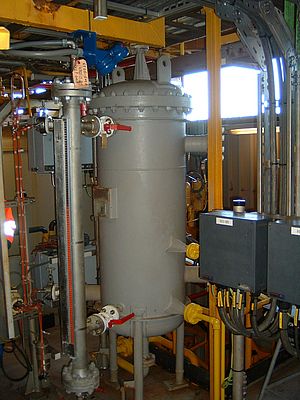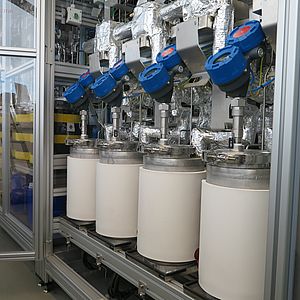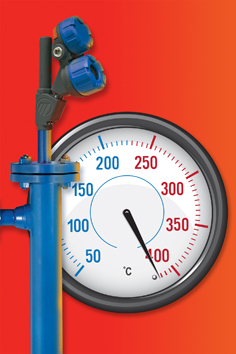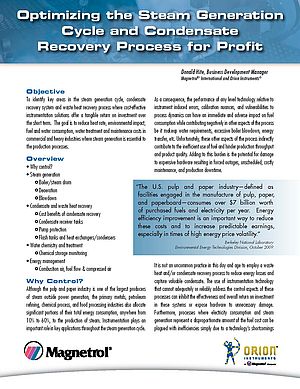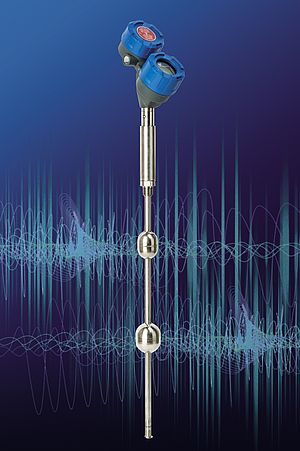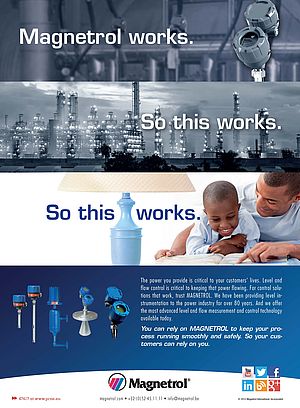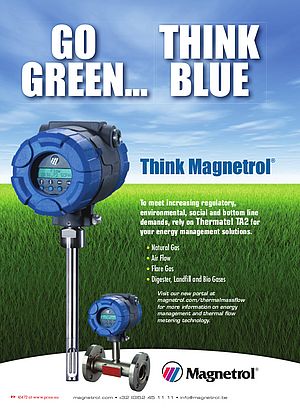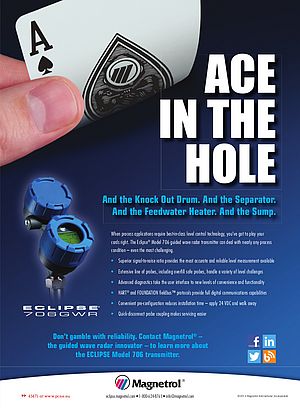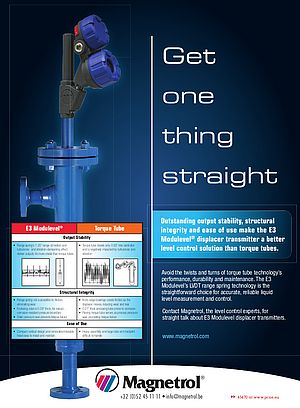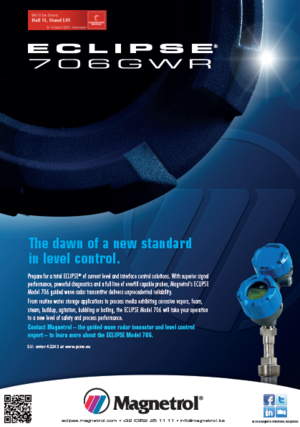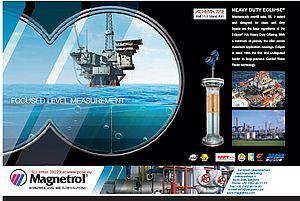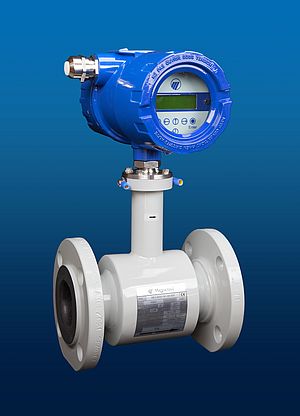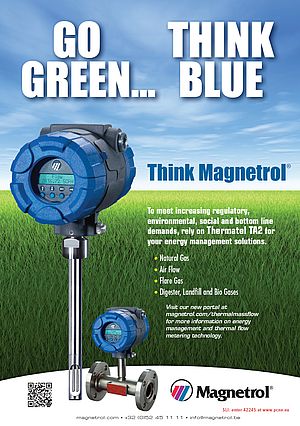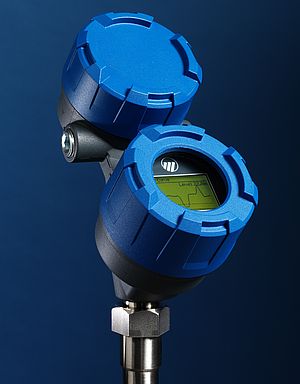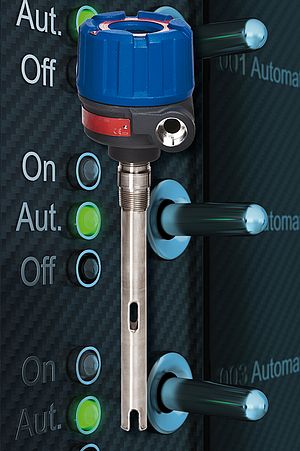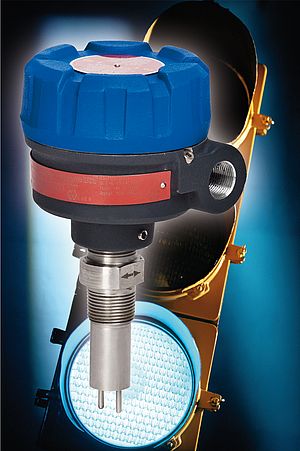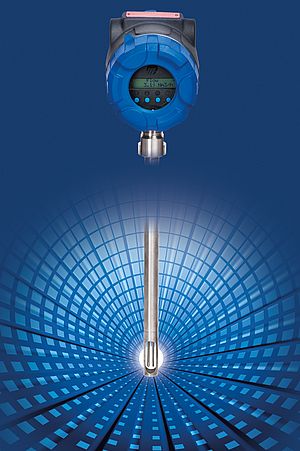PCN Europe talked to Magnetrol’s Johan Van Wesemael about level measurement in the challenging oil & gas environment. Johan is a Chemical Engineer and holds a Master in Industrial Management.
What are the main tasks of level measurement in Oil & Gas processing?
The main task of level measurement is obviously measuring the level of one or two liquids or the interface between two liquids on a continuous basis allowing continuous operation or production in an oil and gas processing plant. An example will provide more clarity. A bulk separator used in the oil industry is separating oil from water on a continuous basis; it is in fact the first operation that is carried out when oil comes to the surface. A GWR device has the possibility of indicating where the top level of the oil is and where the interface level is between the water and the oil. This allows activating pumps to take out one of the two liquids. By continuous measuring these levels one can now assure continuous separation of these two liquids.
Which technologies of level measurement are most suitable?
Magnetrol currently has a range of various products and solutions that are suitable for a number of applications. These include: Guided wave radar, non contact radar and displacer transmitters, float and displacer level switches, thermal dispersion flow and level switches and thermal dispersion gas mass flow meters.
For this interview however I like to concentrate on Guided Wave Radar where Magnetrol was the first to introduce this technology into the oil and gas industry. Launched in 1998 the two-wire loop powered Eclipse GWR back now has well over 60,000 successful installations spread mainly in the oil and gas industries around the globe.
The principle of operation is based on time-of-flight measurement of high a frequency pulsesent down a fixed transmission line reflecting off the liquid surface. The initial product involved one amplifier with two probe types (Coaxial and Twin rod). The product offering now includes one universal amplifier with a complete series of application-oriented GWR probes.
What are the challenges faced in that environment?
The main challenges faced are in general terms the production environment. This includes installation on oil rigs as well as in the desert environment. The Eclipse has continually proven to be a preferred instrument of choice, for level measurement, because of its proven ability to provide accurate, reliable and repeatable measurement, even in the most arduous of applications and environments. Eclipse GWR sets a performance level that surpasses many alternative level measurement technologies. This is due to the efficiency of GWR as a measurement technology and to our continuous development of the broad range of probes, which are designed to meet the demands of the different process variables. Provided one uses the correct probe for its application the measurement is not influenced by pressure, viscosity, temperature, pressure, liquid interface, foaming and vapors.
Can you give us an example of a challenging task and solution?
Here I would like to highlight 2 quite specific cases.
One of the probe types we are offering is what we call the coax type. A rod is put into a pipe and is kept in place. This way a coaxial probe is formed which is the most efficient transmission line for HF-signals. The transmitter showed great performance and precise measurement in liquid level measurement. Some difficulties however were encountered when carrying out measurement in more viscous media. A solution was found in increasing the diameter of the outer tube, surrounding the inner rod, and thus providing more space for the liquid to pass through. In a later stage we have then further improved the product by integrating a flushing connection. This allows to “clean” the inside of the coax probe without the need of dismantling or stopping the production process. A true win-win situation.
A second example is the combination of a magnetic level indication (MLI) combined with a GWR transmitter in one cage and thus forming a redundant system. The concept also saves two process connections and forms a pro-active maintenance system.
For the MLI part a magnetic float is placed just next to the indicator containing magnetic flappers that “flip” into another color. This allows a visual level control and in fact a control on the read out of the GWR transmitter that is mounted on the back in the same chamber. This is a typical replacement for the old sight glass vulnerable to cracking etc.
Edited by: Constanze Schmitz
Level measurement
in Oil & Gas processing
- by Magnetrol International N.V.
- November 29, 2010
- 41737 views


